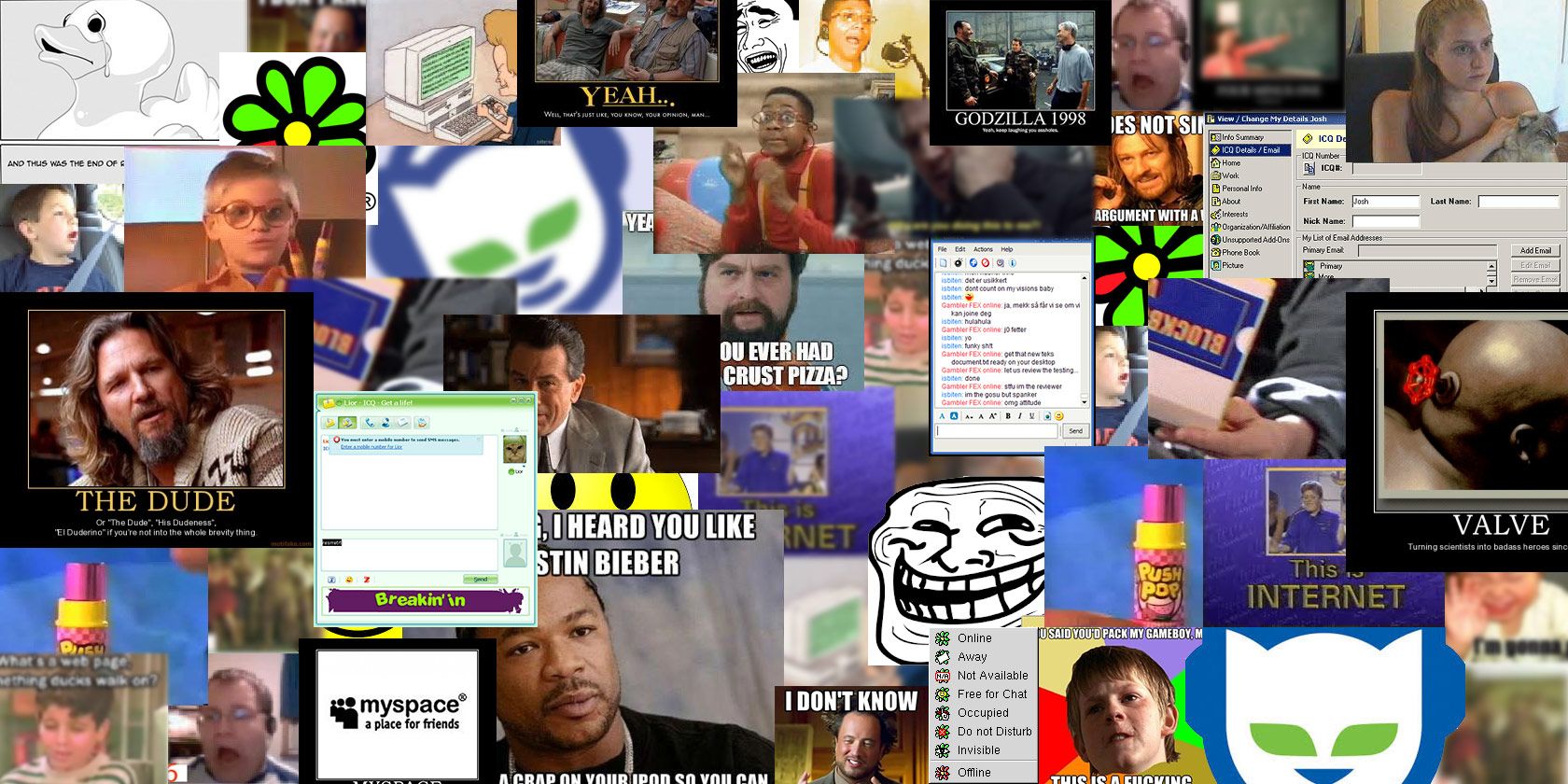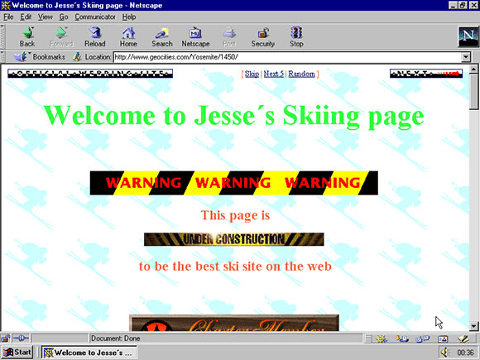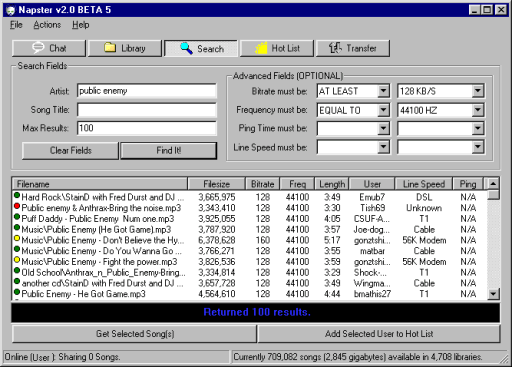"What has been will be again, what has been done will be done again; there is nothing new under the sun." (Ecclesiastes 1:9)
Today's web might not look or feel like the web of the 1990s, but you'd be surprised by how much of it is actually the same when you dive beneath the surface. As they say, a Whopper in shiny wrapper is still a Whopper.
Here are some of the oldest Internet trends, concepts, and memes that still dictate how we use the web in this modern era. Before continuing on, prepare yourself for a heavy dose of nostalgia. We're going way back.
GIFs: Animating Everything Since 1987
Imagine an Internet without any animated images. It'd be a boring, dreadful place, wouldn't it? How fortunate we are that CompuServe developed the GIF, which has been a staple of the web for decades now.
My colleague Mihir recently explored the advent and history of the GIF, not only delving into its technical aspects but also the culture surrounding the format and why it came to be so popular over the years. One thing is true: GIFs have changed the way we use the web.
The progress of animated web media started with the GIF and smoothly transitioned into Flash some time around 1996. Though Flash has started to make an exit thanks to the development of HTML5 videos, GIFs are still going strong. But for how much longer?
The first YouTube video hit the Internet in 2005. While video sharing and GIF sharing tend to fulfill two different social needs, the GIF may soon be retired in favor of a GIF-video hybrid format called GIFV, which is based on WebM. Essentially, it's a soundless, looping video that loads faster and plays back smoother than traditional GIFs.
Regardless of the actual format, it's undeniable that GIF culture is here to stay. Nothing else on the web compares to the succinct simplicity of a seconds-long looping clip that can be shared effortlessly.
Godwin's Law: As True Today as 1990
Also known as Godwin's Rule of Nazi Analogies, this has been a defining trait of Internet arguments for as long as Internet arguments have been around. The law itself is simple:
As an online discussion grows longer, the probability of a comparison involving Nazis or Hitler approaches 1.
The fact that this observation held true way back in 1990 and continues to hold true in 2015 is amazing. When did the world decide that Hitler was the most evil villain of all history? And why is he the de facto standard when it comes to discrediting an opponent's argument? Will it ever end?
Who knows.
But what's more interesting is this trend of turning generalized social observations into Internet laws. For example, consider Poe's Law – first defined in 2005:
Without a winking smiley or other blatant display of humor, it is impossible to create a parody of fundamentalism that someone won't mistake for the real thing.
In other words: it's impossible to distinguish between an extreme viewpoint and a parody of that extreme viewpoint.
There are many so-called Internet commandments that attempt to describe human behavior on the web and most of them are surprisingly accurate to this day. How freaky.
Geocities: Build Your Own Website, Back in 1994
Just the mention of the word "Geocities" brings a smile to my face. In the mid-90's, Geocities was the only way for a non-technical user to create a personal webpage. There was no Facebook, MySpace, or Wordpress. Geocities was it. Geocities was life.
Not long after, copycats and imitators sprung up all over the place. In 1995, Tripod opened its doors. A year later, Angelfire began hosting simple webpages, and a year after that, FortuneCity. It wasn't until 2001, when Freewebs joined the party, that common pagehosting grew to include more advanced features and freedom.
All of this to say: people have always been itching to make their mark on the Internet. Geocities was the precursor to the modern-day blog. Today, users can have a new website set up in mere minutes with hosts like Blogger, Wordpress, and Weebly. Even if the blog concept were to die, people would find other avenues of expression. That's just who we are.
Want to take a trip down memory lane? Check out these free Geocities archives to see what the web was like back then.
ICQ: Popularized Instant Messaging in 1996
I have to admit that I've never used ICQ, but I can certainly appreciate how it revolutionized Internet communications. While ICQ wasn't the first to implement an instant messaging protocol, it was the first to make one popular on such a wide scale.
Following in its footsteps, we got developments like AOL Instant Messenger in 1997, Yahoo Messenger in 1998, and MSN Messenger in 1999. We've all used one or more of these during their peak years, haven't we? Maybe some of us still use them. That's the influence of ICQ.
How does that reach over into today?
Well, instant messages live on in a million different forms. SMS text messages are a big one, especially with the widespread adoption of unlimited mobile texting plans. We also have free mobile messaging apps like WhatsApp, Viber, and LINE.
It's hard to imagine a world without these kind of quick one-off messages, isn't it? Thank you, ICQ.
JenniCam: Live Streaming Back in 1996
Reality television, which is probably better described as unscripted television, began all the way back in the 1940s. It's not a new phenomenon, though it has certainly seen a huge surge in popularity over the past decade or so.
But Jennifer Ringley was the first to bring reality television to the web, with JenniCam. Though it hasn't been running since 2003, it was such an influential bit of Internet history that CNET named JenniCam one of the greatest defunct websites in history.
For those who don't know, JenniCam was an always-on video stream that documented Ringley's life at home. It was entirely unfiltered and uncensored — she kept it running even in her most private moments – even the ones you're thinking of.
At her best, she pulled in over 100 million weekly visitors.
While few have successfully replicated the same kind of experiment, JenniCam did pave the way for public livestreaming on the web. For a while the most popular way to do it was through Justin.TV, but that service came to an end in 2014. Now the most popular choices are Livestream, Ustream, and Twitch TV.
Demotivational Posters: 1998's Precursor to the Image Macro
In 1998, a company called Despair, Inc. began producing a series of posters that parodied the motivational posters plastered all over corporate offices. Can you guess the name of these parodies? Wait for it... demotivational posters!
Though these demotivationals were printed and distributed physically, what's fascinating is that they took on a separate life and energy on the Internet. Users began creating their own demotivationals for any and all kinds of situations (and many of them were quite humorous).
Do you see the demotivational's resemblance to another Internet fad? If you thought "image macro", then you were correct!
One of the staples of modern web culture revolves around this idea of taking an image and stamping it with a few choice words that, when combined, produce anything from a thin smile to a belly laugh. I don't know how long this trend will stick around, but it doesn't seem like it's going to die any time soon.
Napster: File Sharing Like It's 1999
When Napster first hit the scene in 1999, I was just a teenager still learning the ropes of the Internet. Dialup speeds made Napster a pain to use, but the concept was amazing. Free music downloads? It was like magic. (Back then, I had no idea — nor would I probably have cared — that it was piracy).
Napster's innovation turned a lot of heads. It didn't take long for an imitator to enter the ring, which is exactly what happened with LimeWire's arrival in 2000. Then one year later, we got that wonderful program called Kazaa.
Napster shut down in 2001 due to legal issues, LimeWire shut down in 2011 due to legal issues, and Kazaa ceased active development in 2012.
However, we still have the BitTorrent protocol, which could be argued as a spiritual successor of the Napster/LimeWire/Kazaa trifecta. And no matter how you feel about the problem of piracy, nobody can deny that torrenting is one of the most popular activities on the web today.
And There's So Much More!
In the decades since the Internet's inception, nothing but a few critical innovations have really changed the game. As it is, most of what was around back then are still around today — they just look and feel different.
If you're itching for some more nostalgia, check out these websites that'll take you back to the 1990s. And if that's not enough to satisfy the itch, hop over to these websites for sharing nostalgia.
Which Internet trends were most memorable to you? What other trends did I miss? Tell us about the ones you love and the ones you hate in the comments below!
Image Credits: Geocities Via Webmonkey, ICQ Via SurveilStar, JenniCam Via The Big Internet Museum







